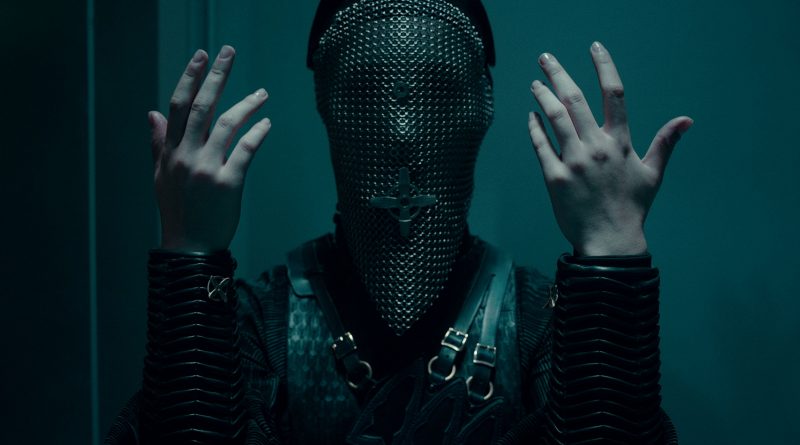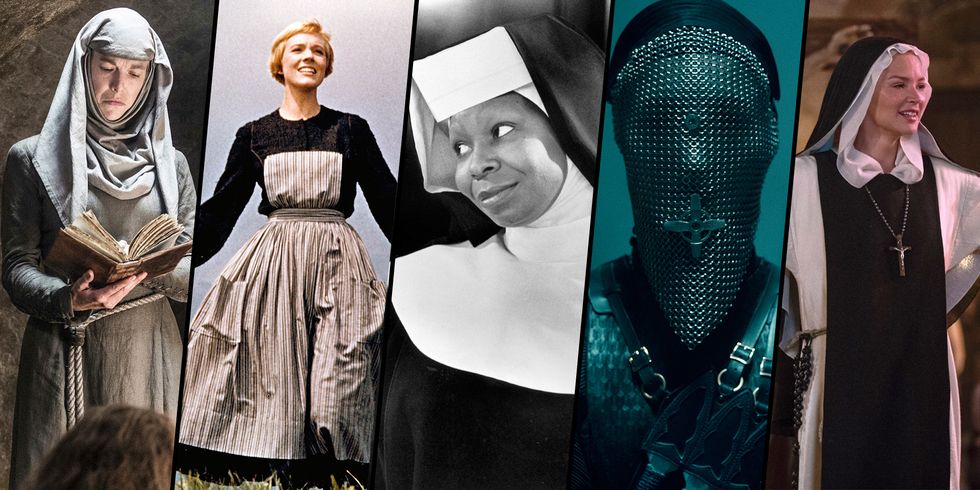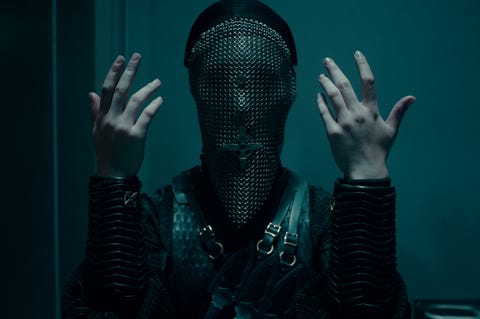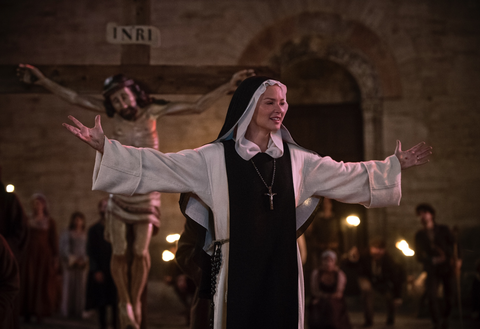Why Is Hollywood Still So Obsessed With Nuns?
Hollywood loves nuns. This isn’t so much a hypothesis as an increasingly clear observation. Since the film genre known as “nunsploitation” hit its peak in 1970s Europe, Hollywood cameras have remained fixated, though to varying degrees of success and within fluctuating waves of popularity, on the Catholic Church’s sacred sisterhood. As the number of people identifying as Christian continues to decline in the United States, the fascination with women of God—on film, anyway—remains an intriguing and controversial trend. (See: Benedetta’s headline-making debut at Cannes last year.) Even streaming services have hopped on the bandwagon in recent years: In 2020, Netflix earned a surprise hit with Warrior Nun, while more recently Peacock greenlit the series Mrs. Davis, starring GLOW’s Betty Gilpin as a nun battling “an all-powerful Artificial Intelligence.”
So what is it about these holy warriors that inspires conflict (Doubt, Warrior Nun, even The Sound of Music), humor (The Singing Nun, Sister Act, The Little Hours), or, perhaps most often, fear (The Conjuring, The Devils, The Nun)? Why, in 2022, does Hollywood seem more transfixed than ever?
Scholars would argue it’s because the seemingly paradoxical values of the Catholic sisterhood—power and piety, strength and femininity—are as urgent and confusing now as ever. The secrecy surrounding nuns’ lifestyle gives them allure; their choice to live in a world without men makes them different; their sacred connection lends them power. It’s a dangerous concoction in combination, especially in a woman, and especially in a society not always eager to interpret nuance. A woman making a choice over her own body and her own beliefs outside of any interference from men can easily be interpreted as a radical act of feminism—and nuns appear frequently in two genres of film often tied to social criticism and caricature: horror and comedy.
“On one hand, there’s a fascination with someone who would be so devoted to their God, to their religious understanding of God, that they would take these vows of chastity and poverty,” says S. Brent Rodriguez-Plate, a professor of religion and film at Hamilton College. On the other hand, “there’s a secret life; they’re cloistered behind walls. There’s a secrecy going on that always causes fascination.” Nuns are also instantly recognizable—everyone knows a habit when they see one—and subsequently easy to represent on the silver screen. This allows filmmakers to play with symbolism that might elude less identifiable protagonists.
The first true spike in nun representation on film—known as the genre “nunsploitation”— launched in Europe in the late ’60s. The genre made a point of “pushing the limits of what these characters are,” Rodriguez-Plate says, by questioning, criticizing, warping, or otherwise “poking fun at” traditional religious power structures and doctrines. Many of the films rebelled against the religious or sexual control of the traditional Catholic Church; in Ken Russel’s 1971 film The Devils, for instance, Vanessa Redgrave’s Sister Jeanne des Anges is sexually repressed and obsessed with Urbain Grandier, a priest, whom she accuses of bewitching her. In an attempt to exorcize this bewitchment, the sisterly convent remove their clothes together and enter a spiritually onset “frenzy.”
The film sparked the kind of controversy repeated as recently as last year, when Paul Verhoeven’s modern nunsploitation film Benedetta premiered at the Cannes Film Festival. Set in 17th century Italy, the protagonist, Benedetta, is a nun who starts having religious—and, intriguingly, erotic—visions, while also developing a secretive sexual relationship with another nun. As a mystic, she has recurring visions of Jesus, which makes her respected and listened to by members of her convent and the Church. “She uses [this newfound power] for herself,” says Virginie Efira, who plays the titular character. “The film takes on a political dimension, simply in the idea that she embraces sexuality. It’s about a woman who is negotiating, who doesn’t leave sexuality as a territory reserved to men. It’s also her own domain.” (Case in point: In different moments throughout the film, Benedetta kisses the breast of a Virgin Mary statue; another, smaller statuette is carved into a dildo.)
Within that domain, Benedetta is also an advocate. She is “someone who fights for freedom of thought, which is very complicated in this convent,” Efira says. “I think that religion often has restricted women’s bodies and the question the film asks is, ‘Who does the female body belong to?’” In Benedetta, nunnery is shown as a means to emancipation, rather than oppression, for the main character. Whether her choices are moral or not, she’s in control of them, and she holds the Church accountable for its own hypocrisy. “She calls out religious institutions for their blasphemy, to say, ‘You think you have God on your side although you only care about money and vanity,’” Efira says.
The way in which Benedetta portrays the Church did not go unnoticed by religious groups. Last September, the premiere of Benedetta at the New York Film Festival was met with a crowd of Catholic protesters, reported Variety. The film was also banned by the government in Russia and with the support of the Russian Orthodox Church, according to the French weekly Courrier International. The conservative Catholic-run American Society for the Defense of Tradition, Family and Property called the film “blasphemous and pornographic.”
“Anytime you take religious figures, figures that people hold to be sacred and important in their lives and you maybe twist it a little bit, maybe mock it a little bit, maybe turn it a little bit toward the dark side, people are going to respond,” Rodriguez-Plate says. The dramatic response to Benedetta merely echoes what came before: The Devils was subject to so much controversy that it had to be re-edited for release. (The original cut was made available to the public as late as 2017.) More recently, The Last Temptation of Christ (1988) by Martin Scorsese was so contentious that a fundamentalist Catholic group led a terror attack on a movie theater showing the film in Paris.
Efira was unsure how Benedetta would be received by the public prior to its release. “The body and religion, sex and the Church, those are two things that usually don’t go well together,” she admits. But Efira stresses the importance of freedom of speech on both sides, as long as it remains nonviolent.
“The idea of shocking just to be controversial does not interest me, but being faced with questions, seeing something that is surprising, unexpected, even something that can be repulsive but that you think about afterwards…That is something I find interesting,” she says. “For that, you need a story that comes from someone who is not asking themselves, ‘Will this please everyone so that it’s lucrative?’ nor, ‘Are we sure that morally, everyone will be okay with this?’ Because if they do, conversations cannot be started.”
The controversy surrounding fictional depictions of nuns has led some in Hollywood to attempt more nuanced, nonfiction portrayals. The 2021 documentary Rebel Hearts chronicled the Sisters of the Immaculate Heart of Mary’s fight for equality and freedom against a powerful cardinal in 1960s Los Angeles. In the film, the nuns are viewed through a different lens than that of nunsploitation, but with a no less powerful feminist message: They march for social justice, advocate for their own education and go against the Church’s hierarchy to fight for what is right.
“There’s always kind of been a mystique around [nuns] and there’s been a stereotype that these nuns with the rulers are slapping people and strict disciplinarians,” says Rebel Hearts producer Shawnee Isaac Smith. “In reality, the nuns have always kind of been the unsung heroes of social activism and civil rights. They’re the ones who have always worked behind the scenes for social causes and have really not gotten any of the accolades for it. But if you look back in history, you’ll see that they’ve always been social activists.”
Smith adds, “Some of these nuns actually went into becoming nuns because of their desire to become educated; they had an opportunity to become who they were without the hindrance of the patriarchal society in general.” Through nunnery, women had the opportunity to become educated. Smith wanted to help tell their stories, which is often subject to stereotypes and misconceptions. “I just saw this as a real hero’s journey and something that could be inspirational for the people who watched it,” she says.
But with agency comes power, and power—especially in the hands of a woman—so frequently ignites fear. That explains why so many nuns in film, even decades after the peak of nunsploitation, receive the horror treatment: From The Conjuring franchise to more recent releases such as Agnes (2021), Bad Nun (2020), and the upcoming film The Devil’s Light, nuns have become commonplace horror figures, scary for their command over both the sacred and profane. And when Hollywood nuns haven’t been scary, they’ve been funny: It’s hard to imagine a woman in a habit without Whoopi Goldberg’s Deloris Van Cartier of Sister Act coming to mind.
Today, filmmakers and moviegoers alike are still fascinated by the idea of women in sacred and impenetrable positions of power. Increasingly, nuns are present in genres outside of comedy, horror and erotica; science fiction, fantasy, and action are capitalizing on the intrigue. Mrs. Davis and Warrior Nun season 2, expected sometime in 2022, in particular seem bent on restructuring the stereotype of a nun as aloof and impossible to understand. Still, when it comes to film, nuns seem always to be in constant opposition to the world that surrounds them, whether it’s Mrs. Davis’ technological advances or Warrior Nun’s patriarchal society. This conflict makes them threatening—and fascinating.
These nuanced representations of nuns on screen are essential, Rodriguez-Plate says. “Films are not just about entertainment; they change how we see the world,” he says. “We think we’re just going in and floating away and escaping for two hours and then we come back and we’re the same person. But the fact is we’ve actually changed.”
This content is created and maintained by a third party, and imported onto this page to help users provide their email addresses. You may be able to find more information about this and similar content at piano.io




